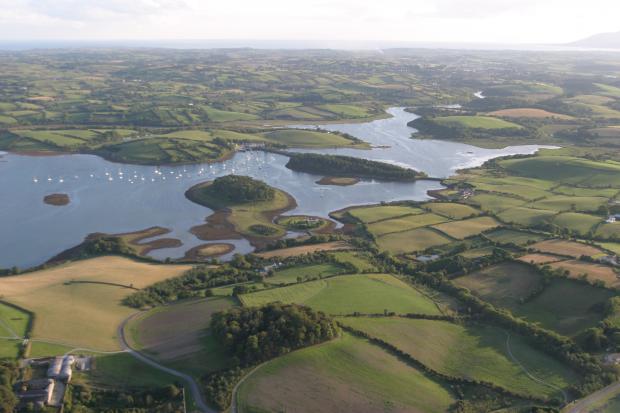
The Strangford Lough Part 2 area contains representative areas of a large number of intertidal habitats ranging from soft mudflats to steeply faced bedrock. The principal physical factor influencing these various tidal habitats is the exceptional flow of water through the Tidal Narrows and this gives rise to an extremely diverse flora and fauna. A considerable number of species exhibit the 'emergence phenomenon', where typically sublittoral organisms are found living on the shore.
Large numbers of filter feeding organisms take advantage of the high plankton turnover provided by the exceptional water movement and many phyla are represented. The diversity of sea anemones, in particular, is extremely high.
The various sediments range from soft mudflats around Castle Island and Gores Island, through muddy sand as at Bar Hall Bay, to clean sandy bays such as at Kilclief Bay and Mill Quarter Bay. The soft mud flats support a variety of burrowing organisms whilst the sandy shore at Kilclief Bay supports very dense populations of various deep burrowing organisms.
There are a number of sheltered boulder shores which all have very species rich flora and fauna, particularly the shore around Ballyhenry Island.
Granagh Bay on the east coast of The Narrows is extremely interesting with a complete range of substrates occurring within a relatively confined area.
At the northern end of Marlfield Bay there is an area of uniformly sloping bedrock which is an uncommon physical feature in the Lough. The classical zonation pattern of intertidal algae and under canopy fauna can be seen here.
Areas of fringing saltmarsh are important because of the diversity of plant species found and the rarity of this habitat in Northern Ireland. A typical assemblage of saltmarsh plants occurs at these sites. In places there are natural transitions from mudflat and saltmarsh to freshwater fen, maritime heath and scrub, particularly at Bar Hall Bay.
Three species of tern breed on a number of islands in the area. The principal colonies are on Jackdaw Island, and to a lesser extent on Swan Island and Dunnyneill Island. A small numbers of Arctic tern have been recorded, while numbers of common tern and sandwich tern are greater.
Strangford Lough is the most important breeding site in Ireland for the common seal. Over half of the breeding population of Strangford Lough is found in The Narrows, the largest colonies being at Bar Hall Bay, Angus and Garter Rocks and Cloghy Rocks. In addition, small numbers of grey seal regularly occur in The Narrows of Strangford Lough.
Related articles
- Appointment of Deputy Chair and up to 16 Board Members to the Council for Nature Conservation and the Countryside (CNCC)
- ASSI Guidance for Public Bodies/Competent Authorities
- Coastal Areas of Special Scientific Interest
- Conservation and protection enforcement programme
- Conservation Management Plans (CMPs)
- Ecological Surveys
- European Marine Sites - Marine Special Areas of Conservation and Special Protection Areas
- Financial administrative penalties
- Fishing licence points system for serious infringements of the enforcement programme
- Introduction to Conservation Management Plans (CMPs) for Northern Ireland’s Special Areas of Conservation
- Mandatory recording of marine mammal bycatch
- Marine Conservation Zones
- Marine historic environment
- Marine Protected Areas
- Marine Ramsar sites
- Monitoring marine habitats and species
- NI CHART Bluefin Tuna
- Outline Construction Environmental Management Plan (CEMP)
- Portrush Coastal Zone
- Shipwrecks
- Special Areas of Conservation
- Special Areas of Conservation for Harbour porpoise
- Special Protection Areas
